All Exams >
Year 4 >
Mathematics for Year 4 >
All Questions
All questions of Geometry for Year 4 Exam
What is the term for the length of the boundary of a circle?- a) Radius
- b) Diameter
- c) Chord
- d) Circumference
Correct answer is option 'D'. Can you explain this answer?
What is the term for the length of the boundary of a circle?
a)
Radius
b)
Diameter
c)
Chord
d)
Circumference

|
Varun Tayal answered |
The boundary of a circle is circumference
What is the definition of an open shape in geometry?- a)A shape that begins and ends at the same point
- b)A shape that has no endpoints
- c)A shape that does not begin and end at the same point
- d)A shape that is always curved
Correct answer is option 'C'. Can you explain this answer?
What is the definition of an open shape in geometry?
a)
A shape that begins and ends at the same point
b)
A shape that has no endpoints
c)
A shape that does not begin and end at the same point
d)
A shape that is always curved
|
|
Riya Singh answered |

An open shape is defined as a shape that does not begin and end at the same point. This means that if you were to trace the outline of the shape, you would not return to the starting point. Examples of open shapes include lines and curves that do not close off, such as arcs or spirals.
What is the number of the geometric shapes used to create tangrams?- a)six
- b)seven
- c)eight
- d)four
Correct answer is option 'B'. Can you explain this answer?
What is the number of the geometric shapes used to create tangrams?
a)
six
b)
seven
c)
eight
d)
four
|
|
Arjun Majumdar answered |
Understanding Tangrams
Tangrams are a classic puzzle consisting of geometric shapes that can be rearranged to form various figures. The set includes seven specific shapes that can create a wide array of designs, making it a fascinating tool for learning about geometry and spatial relationships.
Components of Tangrams
The seven shapes that make up a tangram set are:
- Two Large Triangles
- One Medium Triangle
- Two Small Triangles
- One Square
- One Parallelogram
Explanation of the Seven Shapes
1. Two Large Triangles: These are the largest pieces and can be used in various configurations to form larger shapes.
2. One Medium Triangle: This piece complements the large triangles and adds versatility to the designs.
3. Two Small Triangles: These smaller shapes are perfect for filling gaps and adding detail to the overall figure.
4. One Square: The square acts as a base or a component in many tangram designs, providing stability to the overall configuration.
5. One Parallelogram: This shape introduces a unique angle and can create dynamic designs when combined with other pieces.
Conclusion
In conclusion, the correct answer is option 'B', which signifies that a tangram is made up of seven distinct geometric shapes. This variety allows for immense creativity and problem-solving opportunities, making tangrams an excellent educational tool for children.
Tangrams are a classic puzzle consisting of geometric shapes that can be rearranged to form various figures. The set includes seven specific shapes that can create a wide array of designs, making it a fascinating tool for learning about geometry and spatial relationships.
Components of Tangrams
The seven shapes that make up a tangram set are:
- Two Large Triangles
- One Medium Triangle
- Two Small Triangles
- One Square
- One Parallelogram
Explanation of the Seven Shapes
1. Two Large Triangles: These are the largest pieces and can be used in various configurations to form larger shapes.
2. One Medium Triangle: This piece complements the large triangles and adds versatility to the designs.
3. Two Small Triangles: These smaller shapes are perfect for filling gaps and adding detail to the overall figure.
4. One Square: The square acts as a base or a component in many tangram designs, providing stability to the overall configuration.
5. One Parallelogram: This shape introduces a unique angle and can create dynamic designs when combined with other pieces.
Conclusion
In conclusion, the correct answer is option 'B', which signifies that a tangram is made up of seven distinct geometric shapes. This variety allows for immense creativity and problem-solving opportunities, making tangrams an excellent educational tool for children.
Which of the following best describes a plane in geometric terms?- a) A three-dimensional object
- b) A flat surface that extends indefinitely in all directions
- c) A point in space
- d) A curved surface
Correct answer is option 'B'. Can you explain this answer?
Which of the following best describes a plane in geometric terms?
a)
A three-dimensional object
b)
A flat surface that extends indefinitely in all directions
c)
A point in space
d)
A curved surface
|
|
Naveen Chaudhary answered |
Understanding the Concept of a Plane
A plane is a fundamental concept in geometry. To clarify why option 'B' is the correct answer, let’s explore the definition and characteristics of a plane.
Definition of a Plane
- A plane is defined as a flat surface.
- It extends indefinitely in all directions, meaning it has no boundaries or edges.
Characteristics of a Plane
- Flat Surface: Unlike three-dimensional objects, a plane does not have height or depth; it is purely two-dimensional.
- Indefinite Extension: A plane continues infinitely, which means it does not end at any point, unlike a line segment or a bounded shape.
- No Curvature: A plane is perfectly flat and does not curve; this distinguishes it from curved surfaces, such as spheres or cylinders.
Why Other Options are Incorrect
- Option A (A three-dimensional object): This describes objects like cubes or spheres, which have length, width, and height. A plane is strictly two-dimensional.
- Option C (A point in space): A point is a location with no dimensions, which is different from a plane that has width and length.
- Option D (A curved surface): This option describes surfaces that are not flat, such as the surface of a ball. A plane must remain flat.
In summary, option 'B' accurately captures the essence of a plane in geometric terms, highlighting its flatness and infinite nature. Understanding this concept is crucial as it forms the basis for more complex geometric principles.
A plane is a fundamental concept in geometry. To clarify why option 'B' is the correct answer, let’s explore the definition and characteristics of a plane.
Definition of a Plane
- A plane is defined as a flat surface.
- It extends indefinitely in all directions, meaning it has no boundaries or edges.
Characteristics of a Plane
- Flat Surface: Unlike three-dimensional objects, a plane does not have height or depth; it is purely two-dimensional.
- Indefinite Extension: A plane continues infinitely, which means it does not end at any point, unlike a line segment or a bounded shape.
- No Curvature: A plane is perfectly flat and does not curve; this distinguishes it from curved surfaces, such as spheres or cylinders.
Why Other Options are Incorrect
- Option A (A three-dimensional object): This describes objects like cubes or spheres, which have length, width, and height. A plane is strictly two-dimensional.
- Option C (A point in space): A point is a location with no dimensions, which is different from a plane that has width and length.
- Option D (A curved surface): This option describes surfaces that are not flat, such as the surface of a ball. A plane must remain flat.
In summary, option 'B' accurately captures the essence of a plane in geometric terms, highlighting its flatness and infinite nature. Understanding this concept is crucial as it forms the basis for more complex geometric principles.
How can a circle be drawn using a piece of thread and a pencil?- a)By tracing around the edge of a circular object
- b)By pinning one end of the thread while rotating the pencil
- c)By using a ruler to draw straight lines
- d)By freehand sketching without any tools
Correct answer is option 'B'. Can you explain this answer?
How can a circle be drawn using a piece of thread and a pencil?
a)
By tracing around the edge of a circular object
b)
By pinning one end of the thread while rotating the pencil
c)
By using a ruler to draw straight lines
d)
By freehand sketching without any tools
|
|
Riya Singh answered |
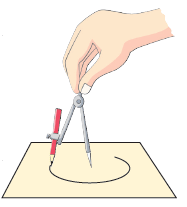
To draw a circle using a piece of thread and a pencil, you can fix one end of the thread to a pin on the paper and attach the pencil to the other end. By holding the thread taut and rotating the pencil around the pin, you create a perfect circle. This method demonstrates the principle of a fixed radius in circle geometry.
What is the difference between a line and a line segment?- a)A line has two endpoints, while a line segment has none.
- b)A line is infinitely long, whereas a line segment has a fixed length.
- c)A line is always curved, while a line segment is straight.
- d)A line is always horizontal, while a line segment can be vertical.
Correct answer is option 'B'. Can you explain this answer?
What is the difference between a line and a line segment?
a)
A line has two endpoints, while a line segment has none.
b)
A line is infinitely long, whereas a line segment has a fixed length.
c)
A line is always curved, while a line segment is straight.
d)
A line is always horizontal, while a line segment can be vertical.
|
|
Gargi Chauhan answered |
Understanding Lines and Line Segments
Lines and line segments are fundamental concepts in geometry, and it’s important to distinguish between them.
Definition of a Line
- A line is an infinitely long straight path that extends in both directions without any endpoints.
- It continues indefinitely, which means there is no fixed length associated with a line.
Definition of a Line Segment
- A line segment, on the other hand, is a part of a line that has two distinct endpoints.
- This means it has a specific length that can be measured, as it only stretches between those two points.
Key Differences
- Length: A line has no length limitation, while a line segment has a definite length determined by the distance between its endpoints.
- Endpoints: A line has no endpoints, whereas a line segment has exactly two endpoints, marking where it begins and ends.
Why Option B is Correct
- The correct answer states that "A line is infinitely long, whereas a line segment has a fixed length." This accurately reflects the fundamental difference in their definitions.
- Recognizing this distinction is crucial for understanding more complex geometric concepts later on.
In summary, while both lines and line segments are straight paths, the infinite nature of a line and the fixed length of a line segment set them apart.
Lines and line segments are fundamental concepts in geometry, and it’s important to distinguish between them.
Definition of a Line
- A line is an infinitely long straight path that extends in both directions without any endpoints.
- It continues indefinitely, which means there is no fixed length associated with a line.
Definition of a Line Segment
- A line segment, on the other hand, is a part of a line that has two distinct endpoints.
- This means it has a specific length that can be measured, as it only stretches between those two points.
Key Differences
- Length: A line has no length limitation, while a line segment has a definite length determined by the distance between its endpoints.
- Endpoints: A line has no endpoints, whereas a line segment has exactly two endpoints, marking where it begins and ends.
Why Option B is Correct
- The correct answer states that "A line is infinitely long, whereas a line segment has a fixed length." This accurately reflects the fundamental difference in their definitions.
- Recognizing this distinction is crucial for understanding more complex geometric concepts later on.
In summary, while both lines and line segments are straight paths, the infinite nature of a line and the fixed length of a line segment set them apart.
Which of the following shapes can be drawn without crossing itself?- a)A simple closed figure
- b)An open shape
- c)A polygon with intersecting sides
- d)A line segment
Correct answer is option 'A'. Can you explain this answer?
Which of the following shapes can be drawn without crossing itself?
a)
A simple closed figure
b)
An open shape
c)
A polygon with intersecting sides
d)
A line segment
|
|
Jyoti Gupta answered |
Understanding Shapes That Can Be Drawn Without Crossing
When considering shapes that can be drawn without crossing themselves, it's important to analyze the characteristics of each option provided.
Option A: A Simple Closed Figure
- A simple closed figure is defined as a shape that is completely enclosed and does not intersect itself at any point.
- Examples include circles, squares, and triangles.
- These shapes can be traced continuously without lifting the pencil or crossing any lines.
Option B: An Open Shape
- An open shape, such as a line or curve that does not return to its starting point, can be drawn without crossing itself.
- However, the question specifically asks for a shape that is closed, which excludes this option.
Option C: A Polygon with Intersecting Sides
- A polygon with intersecting sides is a shape where the lines cross each other.
- This results in a figure that cannot be traced without crossing over some lines, making it an incorrect choice.
Option D: A Line Segment
- A line segment is a straight path connecting two points and does not form a closed shape.
- While it can be drawn without crossing itself, it does not meet the criteria of being a closed figure.
Conclusion
- The only shape that meets all criteria of being a simple closed figure and can be drawn without crossing is Option A.
- Thus, a simple closed figure is the correct answer as it allows for continuous tracing without any intersections.
When considering shapes that can be drawn without crossing themselves, it's important to analyze the characteristics of each option provided.
Option A: A Simple Closed Figure
- A simple closed figure is defined as a shape that is completely enclosed and does not intersect itself at any point.
- Examples include circles, squares, and triangles.
- These shapes can be traced continuously without lifting the pencil or crossing any lines.
Option B: An Open Shape
- An open shape, such as a line or curve that does not return to its starting point, can be drawn without crossing itself.
- However, the question specifically asks for a shape that is closed, which excludes this option.
Option C: A Polygon with Intersecting Sides
- A polygon with intersecting sides is a shape where the lines cross each other.
- This results in a figure that cannot be traced without crossing over some lines, making it an incorrect choice.
Option D: A Line Segment
- A line segment is a straight path connecting two points and does not form a closed shape.
- While it can be drawn without crossing itself, it does not meet the criteria of being a closed figure.
Conclusion
- The only shape that meets all criteria of being a simple closed figure and can be drawn without crossing is Option A.
- Thus, a simple closed figure is the correct answer as it allows for continuous tracing without any intersections.
If the radius of a circle is 4 cm, what is the diameter?- a) 2 cm
- b) 4 cm
- c) 8 cm
- d) 16 cm
Correct answer is option 'C'. Can you explain this answer?
If the radius of a circle is 4 cm, what is the diameter?
a)
2 cm
b)
4 cm
c)
8 cm
d)
16 cm
|
|
Riya Singh answered |
The diameter of a circle can be calculated as twice the radius. Therefore, if the radius is 4 cm, the diameter is 4 cm × 2 = 8 cm. This relationship between the radius and diameter is fundamental in geometry and is essential for various applications.
In the context of circles, what is a chord?- a) A line segment that passes through the center
- b) A line segment joining any two points on the circle
- c) The distance from the center to the edge
- d) The length of the circle's boundary
Correct answer is option 'B'. Can you explain this answer?
In the context of circles, what is a chord?
a)
A line segment that passes through the center
b)
A line segment joining any two points on the circle
c)
The distance from the center to the edge
d)
The length of the circle's boundary
|
|
Riya Singh answered |
A chord is defined as a line segment that joins any two points on the circumference of the circle. Chords can vary in length, with the longest chord being the diameter. Understanding chords is essential for exploring the properties and relationships within circles.
What type of lines are described as being on the same plane and never meeting?- a) Intersecting lines
- b) Perpendicular lines
- c) Parallel lines
- d) Skew lines
Correct answer is option 'C'. Can you explain this answer?
What type of lines are described as being on the same plane and never meeting?
a)
Intersecting lines
b)
Perpendicular lines
c)
Parallel lines
d)
Skew lines
|
|
Riya Singh answered |
Parallel lines are defined as lines that lie on the same plane and never meet, regardless of how far they are extended. They maintain a constant distance apart and are crucial in various real-life applications, such as architecture and engineering.
Which type of lines intersect at a right angle?- a)Parallel lines
- b)Intersecting lines
- c)Perpendicular lines
- d)Skew lines
Correct answer is option 'C'. Can you explain this answer?
Which type of lines intersect at a right angle?
a)
Parallel lines
b)
Intersecting lines
c)
Perpendicular lines
d)
Skew lines
|
|
Ashish Ghoshal answered |
Understanding Line Types
Lines can be classified into different categories based on their orientation and relationship to each other. Here’s a breakdown of the types mentioned in the question:
1. Parallel Lines
- These lines never meet or intersect.
- They maintain a constant distance from each other.
- Example: Train tracks.
2. Intersecting Lines
- These lines cross each other at any angle.
- The angle at which they intersect can vary.
- Example: The intersection of streets.
3. Perpendicular Lines
- Perpendicular lines are a special type of intersecting lines.
- They intersect at a right angle, which measures 90 degrees.
- Example: The edges of a square or rectangle.
4. Skew Lines
- Skew lines are lines that do not intersect and are not parallel.
- They exist in different planes.
- Example: The edges of a box that do not meet.
Conclusion
The correct answer to the question is option 'C', Perpendicular lines, because they are specifically defined by their right angle intersection. Understanding the characteristics of these lines helps in geometry, making it easier to identify and work with different shapes and angles.
Lines can be classified into different categories based on their orientation and relationship to each other. Here’s a breakdown of the types mentioned in the question:
1. Parallel Lines
- These lines never meet or intersect.
- They maintain a constant distance from each other.
- Example: Train tracks.
2. Intersecting Lines
- These lines cross each other at any angle.
- The angle at which they intersect can vary.
- Example: The intersection of streets.
3. Perpendicular Lines
- Perpendicular lines are a special type of intersecting lines.
- They intersect at a right angle, which measures 90 degrees.
- Example: The edges of a square or rectangle.
4. Skew Lines
- Skew lines are lines that do not intersect and are not parallel.
- They exist in different planes.
- Example: The edges of a box that do not meet.
Conclusion
The correct answer to the question is option 'C', Perpendicular lines, because they are specifically defined by their right angle intersection. Understanding the characteristics of these lines helps in geometry, making it easier to identify and work with different shapes and angles.
How can the length of a line segment be measured accurately?- a) By estimating with a pencil
- b) By using a ruler
- c) By comparing with another object
- d) By drawing a parallel line
Correct answer is option 'B'. Can you explain this answer?
How can the length of a line segment be measured accurately?
a)
By estimating with a pencil
b)
By using a ruler
c)
By comparing with another object
d)
By drawing a parallel line
|
|
Riya Singh answered |
The length of a line segment can be accurately measured using a ruler. To do this, align the zero mark of the ruler with one endpoint of the segment and read the measurement at the other endpoint. This method ensures precision in measuring distances.
What is the diameter of a circle?- a) The distance from the center to any point on the circle
- b) A line segment joining any two points on the circle
- c) A chord that passes through the center of the circle
- d) The length of the circle's circumference
Correct answer is option 'C'. Can you explain this answer?
What is the diameter of a circle?
a)
The distance from the center to any point on the circle
b)
A line segment joining any two points on the circle
c)
A chord that passes through the center of the circle
d)
The length of the circle's circumference
|
|
Riya Singh answered |
The diameter of a circle is defined as a chord that passes through the center of the circle, effectively dividing it into two equal halves. The diameter is twice the radius, making it a crucial measurement in understanding the properties of circles.
What do we call the area inside a circle?- a)Radius
- b)Circumference
- c)Interior
- d)Diameter
Correct answer is option 'C'. Can you explain this answer?
What do we call the area inside a circle?
a)
Radius
b)
Circumference
c)
Interior
d)
Diameter
|
|
Riya Singh answered |
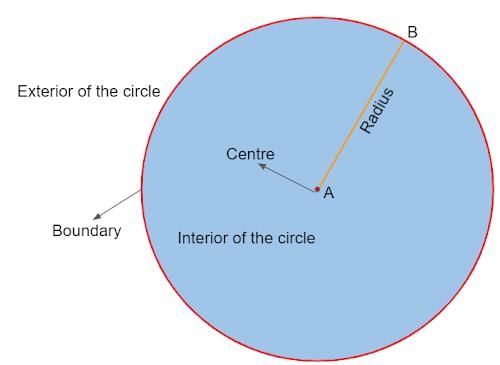
The area inside a circle is referred to as the interior of the circle. This area can be calculated using the formula A = πr², where r is the radius. Understanding the interior is important for calculating space and area in geometric problems.
What is the term for the point where two sides of a polygon meet?- a) Edge
- b) Radius
- c) Vertex
- d) Diameter
Correct answer is option 'C'. Can you explain this answer?
What is the term for the point where two sides of a polygon meet?
a)
Edge
b)
Radius
c)
Vertex
d)
Diameter
|
|
Riya Singh answered |
The point where two sides of a polygon meet is called a vertex. Each polygon has a certain number of vertices that correspond to its number of sides. For instance, a triangle has three vertices, while a quadrilateral has four. This concept is essential for analyzing polygon properties.
Which of the following statements is true regarding rays?- a)A ray has two endpoints.
- b)A ray extends indefinitely in both directions.
- c)A ray has one endpoint and extends indefinitely in one direction.
- d)A ray can be closed at both ends.
Correct answer is option 'C'. Can you explain this answer?
Which of the following statements is true regarding rays?
a)
A ray has two endpoints.
b)
A ray extends indefinitely in both directions.
c)
A ray has one endpoint and extends indefinitely in one direction.
d)
A ray can be closed at both ends.
|
|
Subset Academy answered |
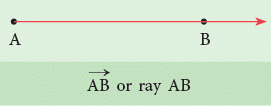
A ray is defined as having one endpoint and extending indefinitely in one direction. This is different from line segments, which have two endpoints, and lines, which have no endpoints. For example, sunlight can be thought of as rays that originate from the sun.
What is the common endpoint of an angle called?- a) Base
- b) Arm
- c) Vertex
- d) Side
Correct answer is option 'C'. Can you explain this answer?
What is the common endpoint of an angle called?
a)
Base
b)
Arm
c)
Vertex
d)
Side
|
|
Riya Singh answered |
The common endpoint of an angle is called the vertex. The vertex is where the two rays that form the angle meet. Understanding the components of an angle is crucial in geometry as it helps in measuring and constructing angles accurately.
What symbol is used to indicate that two lines are parallel?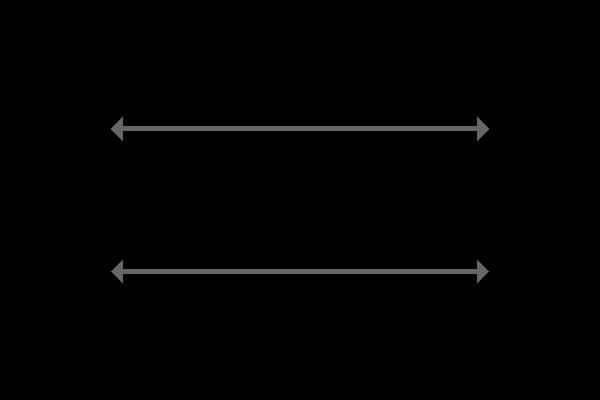
- a)∩
- b)//
- c)||
- d)⊥
Correct answer is option 'C'. Can you explain this answer?
What symbol is used to indicate that two lines are parallel?

a)
∩
b)
//
c)
||
d)
⊥
|
|
Riya Singh answered |
The symbol used to indicate that two lines are parallel is "||". This means that the lines will never meet, regardless of how far they are extended. An example of parallel lines can be seen in train tracks, which remain equidistant from each other.
Which of the following shapes is NOT classified as a polygon?- a)Triangle
- b)Rectangle
- c)Circle
- d)Pentagon
Correct answer is option 'C'. Can you explain this answer?
Which of the following shapes is NOT classified as a polygon?
a)
Triangle
b)
Rectangle
c)
Circle
d)
Pentagon
|
|
Riya Singh answered |
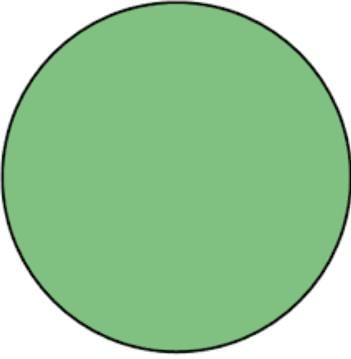
A circle is not classified as a polygon because it does not consist of straight lines. Polygons must be closed figures formed by straight line segments, while circles are defined by their round shape and lack of corners, showcasing the diversity of geometric forms.
Chapter doubts & questions for Geometry - Mathematics for Year 4 2025 is part of Year 4 exam preparation. The chapters have been prepared according to the Year 4 exam syllabus. The Chapter doubts & questions, notes, tests & MCQs are made for Year 4 2025 Exam. Find important definitions, questions, notes, meanings, examples, exercises, MCQs and online tests here.
Chapter doubts & questions of Geometry - Mathematics for Year 4 in English & Hindi are available as part of Year 4 exam.
Download more important topics, notes, lectures and mock test series for Year 4 Exam by signing up for free.
Mathematics for Year 4
21 videos|79 docs|23 tests
|

Contact Support
Our team is online on weekdays between 10 AM - 7 PM
Typical reply within 3 hours
|
Free Exam Preparation
at your Fingertips!
Access Free Study Material - Test Series, Structured Courses, Free Videos & Study Notes and Prepare for Your Exam With Ease

 Join the 10M+ students on EduRev
Join the 10M+ students on EduRev
|

|
Create your account for free
OR
Forgot Password
OR
Signup on EduRev and stay on top of your study goals
10M+ students crushing their study goals daily










